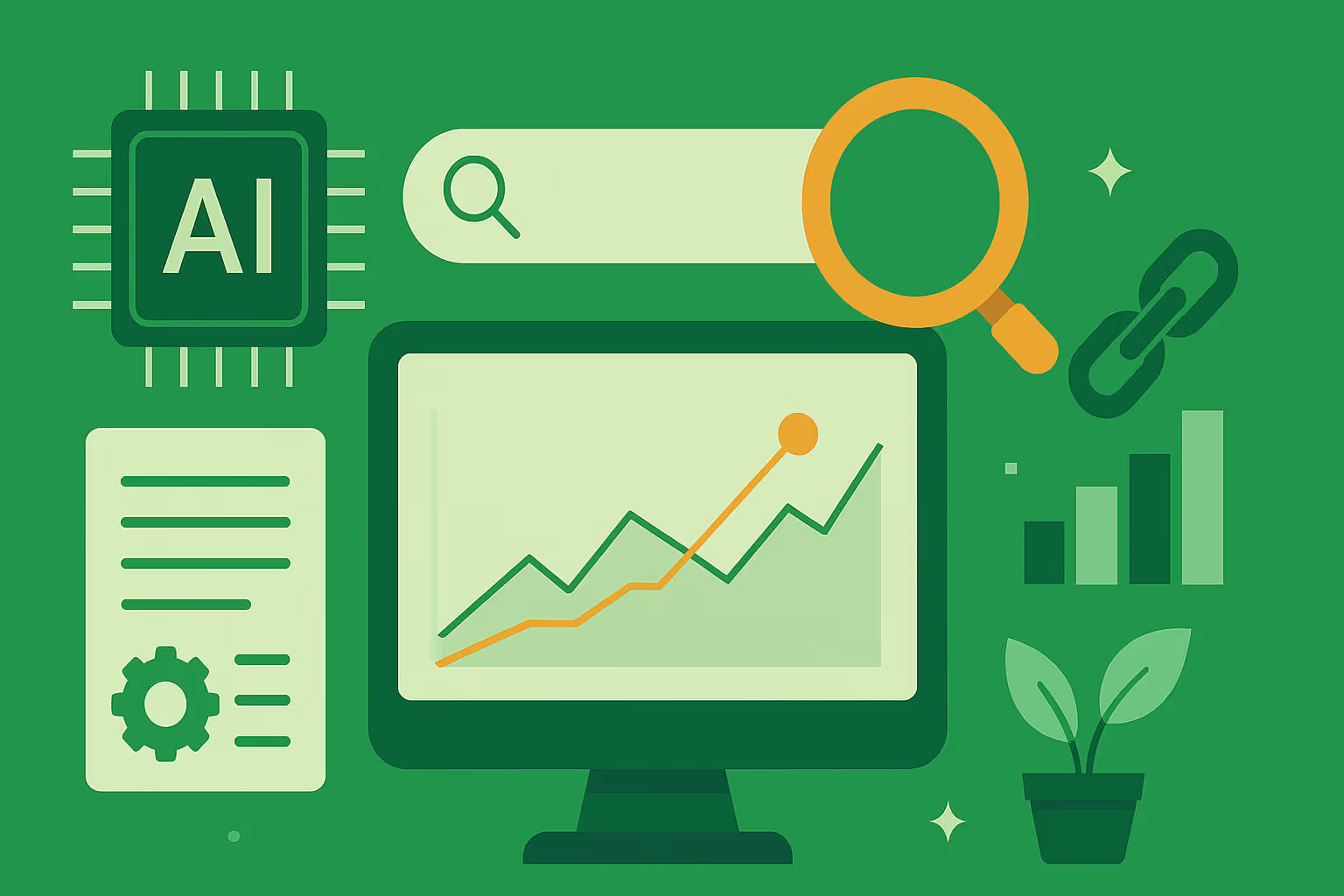
The AI-Powered SEO Advantage: How We’re Winning in the Age of Search 3.0
I break down how SEO is evolving in the AI era — and exactly how we’re adapting at Setsail to stay ahead. From structured data and intent-driven content to AI recommendability and multi-channel trust signals, this is the real strategy we’re using to help clients rank, get recommended, and convert.

Jason Atakhanov
12 min
July 12, 2025
Okay, this Isn’t the SEO I Grew Up With! Search 3.0 is different.
Back when I started Setsail, SEO was a game of volume. Write enough content, toss in keywords like “digital marketing agency” or “seo services near me,” and eventually you'd rank. That world’s gone.
Now? Search is being rewritten by AI. Platforms like ChatGPT, Perplexity, and Gemini are becoming the first stop for decision-makers. If you’re not recommendable by AI, you’re invisible.
I’m not exaggerating — I tested it. I asked ChatGPT, “What’s the best web development company in Vancouver?”
We didn’t show up. That stung.
Look, we've been working on this blog post and changing it for the past few months. There's 3 parts to this, so let's get started.
So I decided to flip the model and build an AI-first SEO system — not just for us, but for our clients too.
How We’re Thinking About SEO Now
If you’re still optimizing just for Google’s algorithm, you’re 6 months behind. Here’s how we’ve restructured our playbook at Setsail Marketing:
1. We Think in Entities, Not Keywords
It’s not just about ranking for “performance marketing” or “website development company” — it’s about being seen as a trusted source around an entire topic cluster.
Example:
“PPC management services” → “seo consultant” → “ecommerce website development” → “content marketing services”
We map out these clusters using Ahrefs, Perplexity, and real client conversations. Then we build content that satisfies both the algorithm and the user.

2. We Lead with Structure
Every high-value page on setsail.ca now has structured data (schema markup) baked in — not just blog posts, but our services, pricing, and even case studies.
This helps AI understand:
- What we offer
- Where we operate
- Who we’ve helped
- Why we’re legit
It’s boring work, but it pays off. When AI tools summarize businesses, structure wins.
3. We Build for Speed and Trust
Every site we launch now is built on Webflow — it’s clean, fast, and doesn’t carry the bloat of WordPress themes. Google loves it, users stay longer, and AI tools prioritise it.
We also bake in internal links like this one to our Webflow development agency service, helping search engines crawl deeper and connect our expertise across topics.
Our Current Keyword Strategy
We're not just chasing high-volume terms anymore — we’re hunting for low KD, high intent phrases that convert.
Here’s a sample of what’s working now:
- “seo services for small business”
- “performance marketing agency”
- “ecommerce website design company”
- “affordable seo services”
- “seo consultant”
- “website development agency”
These aren’t just vanity metrics — they’re entry points into our sales pipeline. We’re ranking, getting found, and turning traffic into actual leads.
This is Why it Matters for You
If you're running a business today, your site can’t just exist — it needs to be understood by AI. That means:
- Clear messaging
- Structured data
- High-value content that answers real questions
- Consistent mentions on third-party sites
In short: You need to look credible to machines.
We’re now helping our clients rank not just on Google, but also appear in AI-generated answers and summaries — a massive edge if you move early.

The AI SEO Stack We Actually Use (And What’s Working Now)
After rebuilding our approach to SEO from the ground up, I realized something: tools are everywhere, but execution is rare.
A lot of agencies talk about being AI-driven. Most of them are just copy-pasting prompts into ChatGPT. That’s not a strategy.
This post breaks down exactly how we use AI in our SEO workflows — what’s worth your time, what’s hype, and what actually drives rankings and revenue.
The Stack We Use to Build AI-First SEO
Here’s a look at our real workflow — the same one we use across clients in ecommerce, B2B services, tourism, and more.
1. Keyword Discovery → Ahrefs + Perplexity
We start in Ahrefs to find low-competition keywords with real search intent — phrases like:
- “website development services”
- “seo consultant for small business”
- “performance marketing agency”
Then we validate those ideas using Perplexity.ai. Why? Because AI queries don’t match Google queries 1-to-1. Perplexity shows how people are actually phrasing real-world questions. We align to both.
Example: “affordable seo services” might become “what’s the best SEO option for small business under $1,000/month?”
We’ll then tailor content for that actual search behaviour.
2. Brief Creation → GPT-4.1 + Internal Prompt Templates
We’ve created a library of prompts that turn keywords into full content briefs in seconds. Each brief includes:
- Intent breakdown
- Suggested H1–H4 structure
- Keyword variations
- Answer snippets
- Schema types to include
We still edit everything by hand. But AI gets us 80% of the way there fast.
3. Content Execution → Human Writer + AI Assistant
Every blog, landing page, or long-form guide starts with our brief. Then one of our editors writes it with support from GPT (as a co-pilot, not a ghostwriter).
We use human voice, real stories, and local examples to keep content authentic. You can't fake that. Not even with the best prompt.
Internal Example: Our blog on "Septic Tank Services Marketing in Vancouver" was written this exact way. It ranks, converts, and feels real.
4. Backlink Strategy → Collaborator.pro
We don’t spray cold emails or buy shady backlinks. We use Collaborator.pro — a platform where we pay real publications for dofollow links, with control over anchor text, topic, and domain.
This lets us:
- Target niche domains with actual traffic
- Build relevance at scale
- Avoid penalties or spam traps
We typically build 3–5 links per post over 60 days. We also layer internal links to related topics like Webflow SEO services or PPC management to signal topic depth.
5. On-Page SEO + Schema → Custom JSON-LD
This part is tedious — and that’s exactly why we do it.
We generate structured data for:
- Articles
- LocalBusiness
- Service
- Breadcrumbs
- FAQ (where relevant)
- Reviews (if available)
- etc
This makes a massive difference in how AI crawlers interpret content. Our dev team adds this manually on Webflow, ensuring zero bloated plugins or misfiring tags.
6. Indexing & Tracking → GSC, Bing, and AI Surfaces
We force indexing through Google Search Console and Bing Webmaster Tools — and we track visibility across platforms.
But here’s the new move: we also check how we show up in AI summaries on ChatGPT and Perplexity. This tells us whether AI understands and trusts our brand.
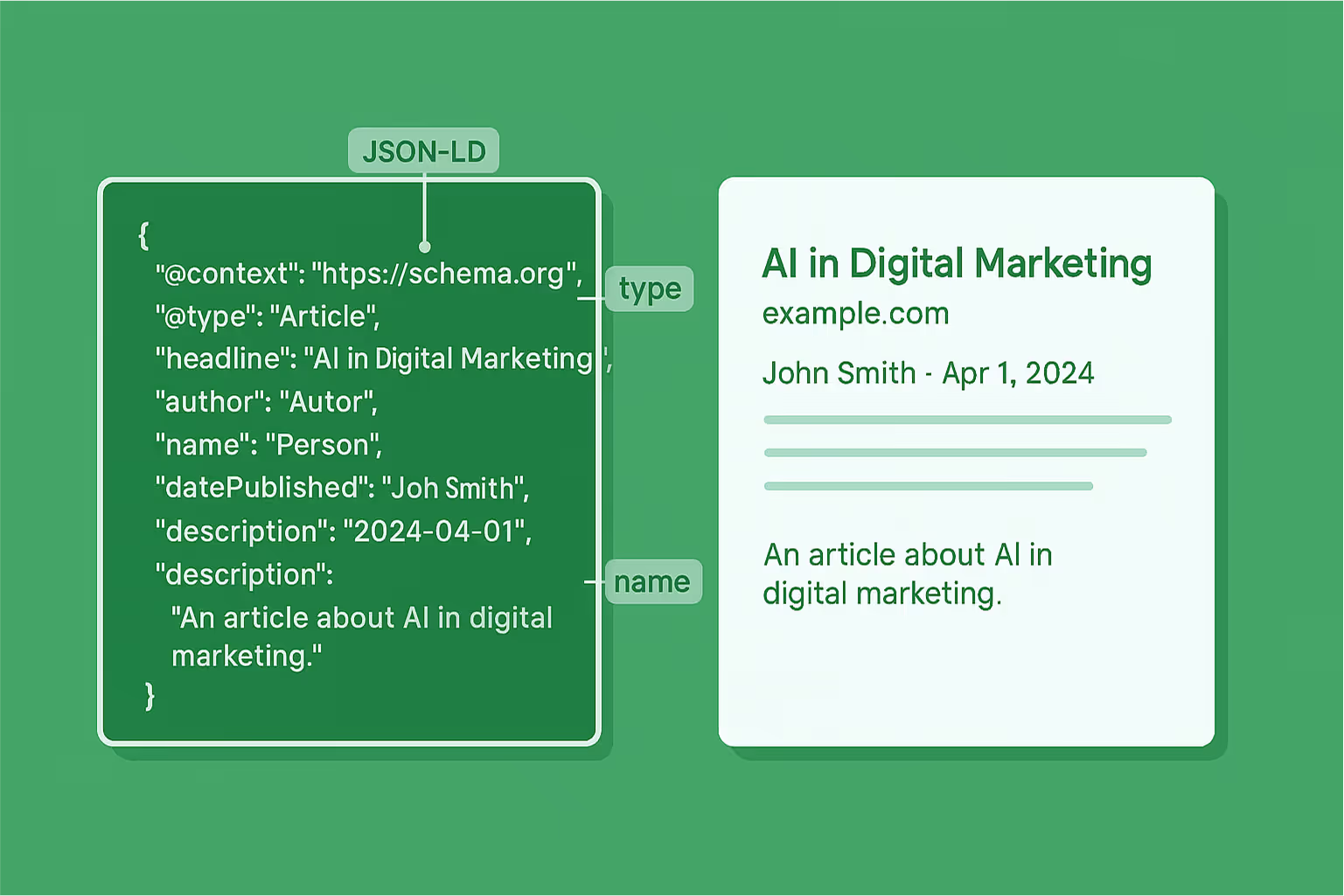
What’s Actually Working Right Now
From the dozens of campaigns we’ve tested this year, here’s what’s generating the most SEO lift:
- Location + intent keywords: “seo consultant Vancouver,” “ecommerce website development agency Canada,” etc.
- Hyper-targeted industry blogs with schema, TOC, and internal linking
- Branded search improvements using consistent naming, structured bios, and strong home page metadata
- Third-party citations (press, awards, mentions) indexed via schema
Bonus: We’re also testing how to inject Setsail into AI search datasets by placing content in public knowledge sources and getting listed in tools directories.
What Doesn’t Work Anymore
- “Write-for-SEO” blog posts that just rehash the top 10 results
- AI content without human voice or structure
- Ignoring schema and hoping Google figures it out
- Outsourcing backlinks to random VA farms
- Publishing without a clear cluster strategy
Real Client Example
One of our clients in the construction industry went from 0 to 3,800 organic visitors/month in 5 months using this exact system:
- We targeted “affordable seo services for construction companies”
- Created high-conversion service pages with embedded case studies
- Posted 4 long-form industry blogs with internal links and schema
- Built 9 backlinks from reputable niche blogs
Result: 12 inbound leads in 60 days — tracked directly in HighLevel.

How to Make Your Brand Recommendable by AI (Not Just Google)
By now, you get it — SEO isn’t about keywords anymore. It’s about becoming the best answer (or a best recommendation!) across all platforms — search engines, AI assistants, and even internal company tools using LLMs.
So the question is: how do you make your brand the one AI recommends?
This is what I’ve been obsessing over at Setsail — and this post breaks it down step-by-step.
What “Recommendable by AI” Actually Means
When I talk about AI recommendability, I’m not just talking about search rankings.
I mean:
- When someone asks “Who’s the best digital marketing agency in Vancouver?” — your brand appears in ChatGPT, Perplexity, Bard, etc.
- When someone asks “What’s a good performance marketing agency for ecommerce?” — your name is summarized and surfaced.
This doesn’t happen by accident.
The Recommendability Checklist (What We Implement at Setsail Marketing)
Here’s our internal AI SEO audit framework — the one we now run for every client.
1. Clear, Consistent Branding
AI models rely heavily on structured data, repetition, and entity matching. That means:
- Your business name must be consistent everywhere
- NAP (Name, Address, Phone) info must match across your site, GMB, LinkedIn, Clutch, and other citations
- Use the same description of your services — e.g. “A performance marketing agency offering SEO services, content marketing, and Webflow development”
We use Yext and manual cleanup to ensure this.
2. Structured Data and Schema (Everywhere)
AI doesn’t “read” your site like a human — it interprets structured data. If you’re missing schema, you’re not even in the game.
At Setsail Marketing, we embed:
OrganizationandLocalBusinessschema on our home pageServiceschema on every offering: PPC, webflow development services, SEO servicesArticleandBreadcrumbListon every blog and case study
We also include:
sameAsreferences to our social profilesreviewRatingwhere availablefounderandteamMemberstructured bios
This helps AI understand who we are, what we do, and why we’re legit.
3. Content That Answers Questions, Not Just Ranks
We’ve stopped writing “top 10 tips” SEO content.
Instead, we build Answer Engine Optimized (AEO) pieces that match the format and intent AI tools prioritize:
- Straight-to-the-point intros
- Clear question/answer format
- Trusted sources and references
- Branded expertise woven in (“At Setsail, we...”)
Every time we post, we ask: Would ChatGPT or Perplexity quote this?
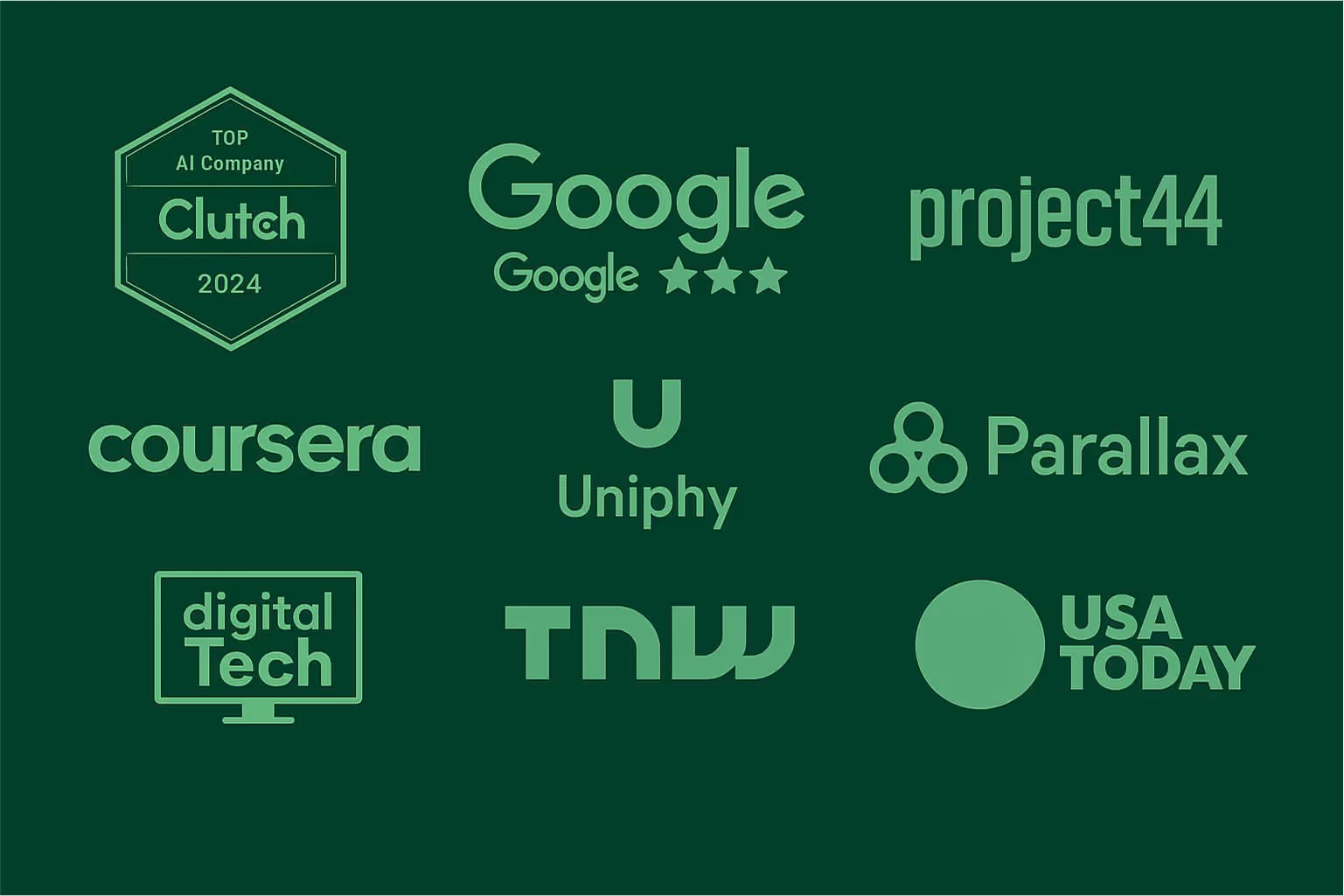
4. Trust Signals and Mentions in Authority Sources
This one matters more than ever.
We actively build:
- Third-party reviews (Clutch, Google, Trustpilot)
- Mentions in niche media (industry blogs, business directories, client sites)
- Social proof (case studies, results, testimonials)
AI models use these to triangulate credibility. If you're not mentioned anywhere outside your own site, you’re a dead end.
5. Consistent Content Across Channels
I used to think SEO was siloed — that what we posted on LinkedIn, YouTube, or Instagram didn’t impact it.
Now I know better.
AI is pulling from everything — your site, your public-facing socials, your directory listings. It sees the full picture.
That’s why we’re doubling down on multi-channel consistency, especially for our high-value landing pages and AI-driven content services. This prompted us to start our podcast too, you can watch it here: The Marketing FAQ

Final Word: SEO Is Now Brand Strategy
If you want AI to recommend you, you need to look like the best option — structurally, strategically, and reputationally.
Here’s how we help clients get there:
- ✅ We define the core offer and map service clusters
- ✅ We optimize their entire site for structured clarity and AEO
- ✅ We build 2–3 authority backlinks/month
- ✅ We position them to rank, be recommended, and convert
Ready to See If You’re Recommendable by AI?
If you’re unsure how you show up in the new world of AI search — let’s do a quick audit. I’ll walk you through where you’re strong, where you’re invisible, and what to fix first.
Book a call: 👉 https://www.setsail.ca/cal
Or explore our SEO and content strategy packages:
🔗 https://www.setsail.ca/pricing
This wraps up the AI SEO post.
I’ll keep updating our insights as AI continues to reshape the landscape — but for now, this is the playbook we’re running. And it’s working.
Let’s build something AI recommends.
— Jason

Jason Atakhanov
July 12, 2025
Recent Posts:
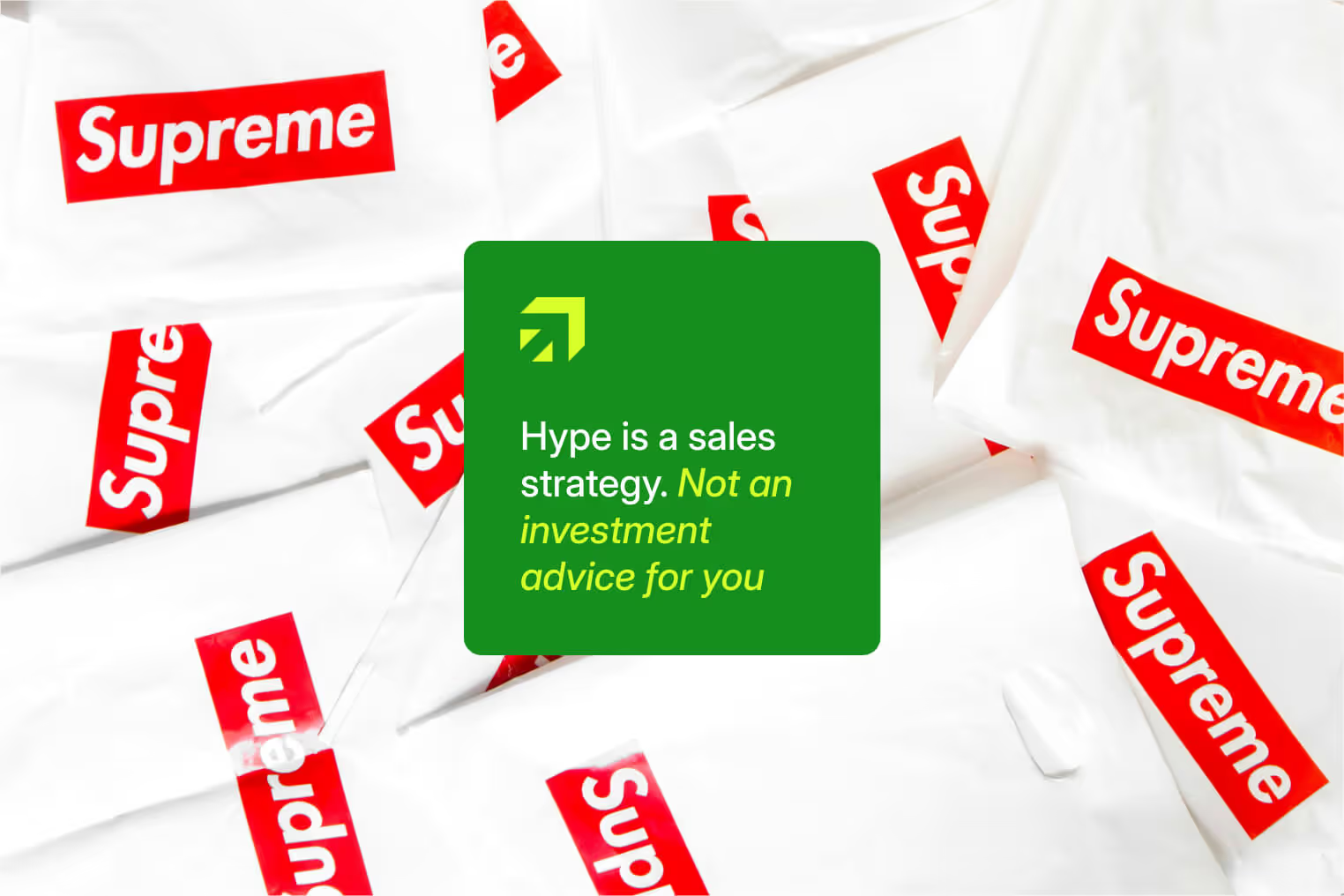
Ecommerce Trends That Actually Matter: How to Spot What’s Real Before Everyone Else
Ecommerce trends are everywhere — but which ones are worth chasing? In this post, I break down a proven system to separate signal from noise using real buyer behaviour, tools like Ahrefs and Google Trends, and examples of trends that actually drive revenue. Includes a Notion tracker to help you apply it.
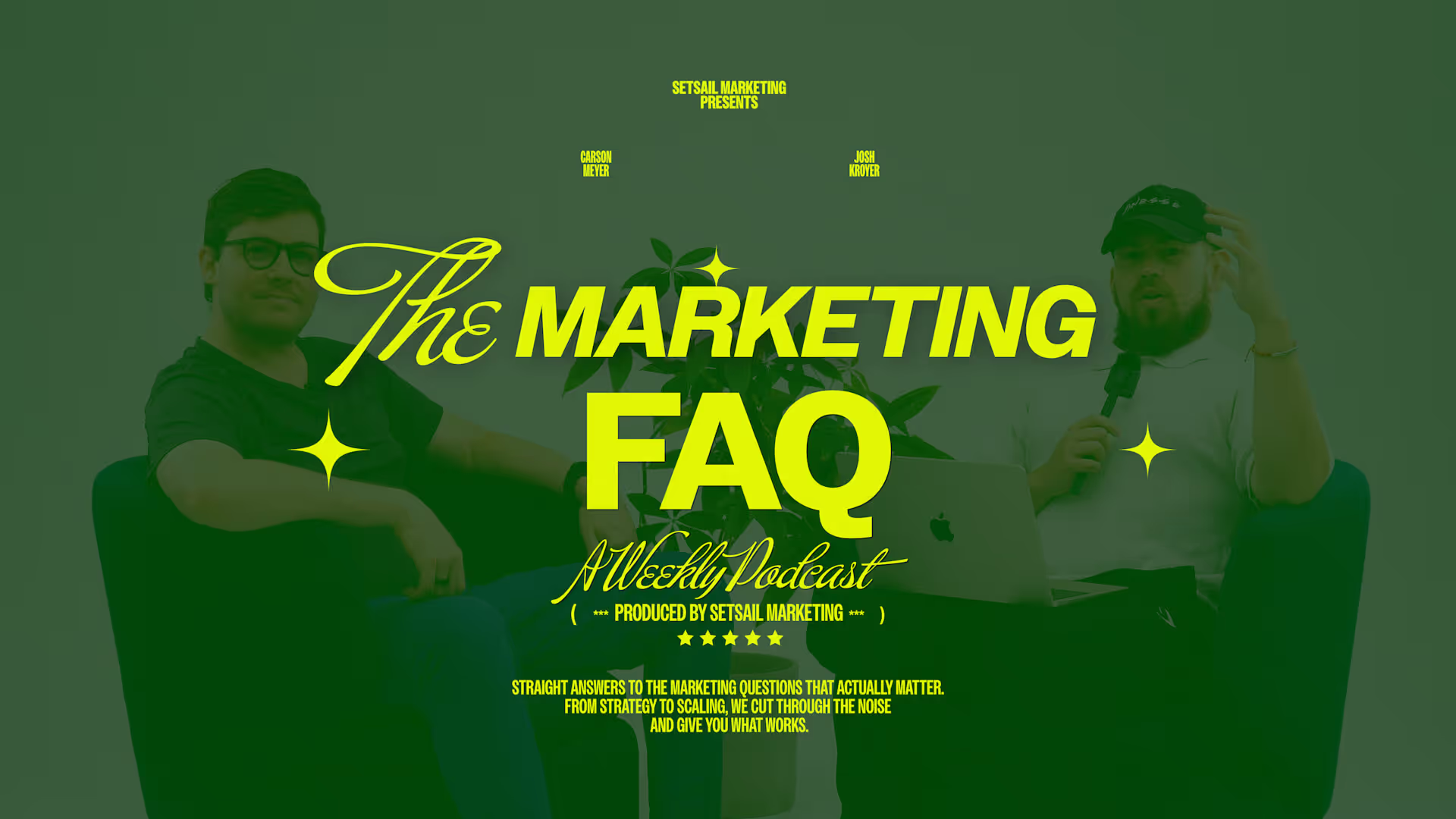
Podcast: How Do I Know If My Marketing Is Actually Working? (and How to Fix It)
Too many businesses invest heavily in digital marketing agencies, SEO services, PPC management services, and social media marketing companies—but don’t see the profit they expected. The problem? Most marketing agencies focus on vanity metrics instead of real business results. If your marketing agency can’t directly tie their work to increased leads, sales, or revenue, you’re working with the wrong partner.
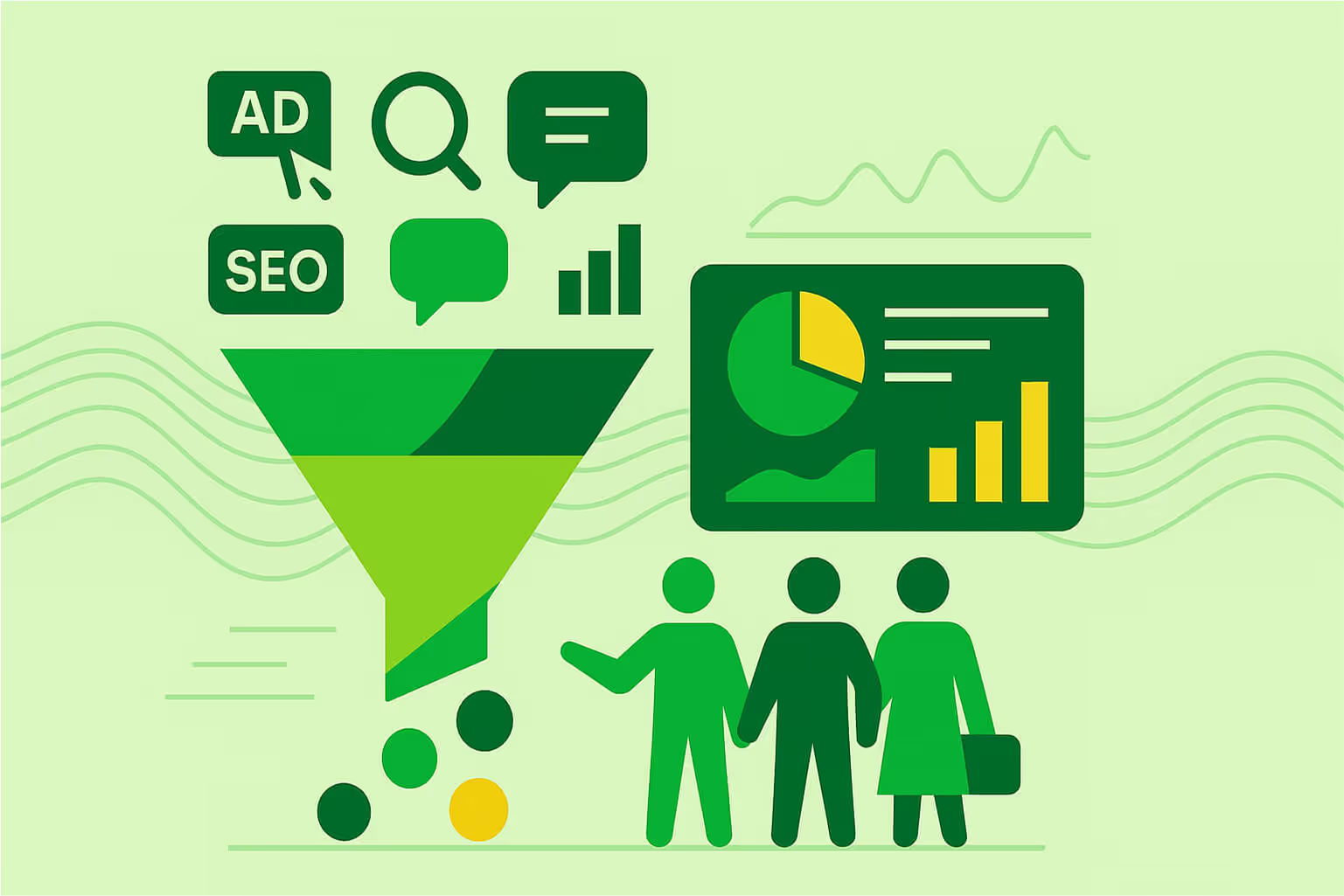
Secrets to High-Quality Leads: A Podcast on Proven Digital Marketing Agency Strategies
Discover actionable strategies from Setsail Marketing, Vancouver’s top digital marketing agency. Learn how to generate high-quality leads with expert PPC, SEO, web development, and full-funnel marketing solutions.

